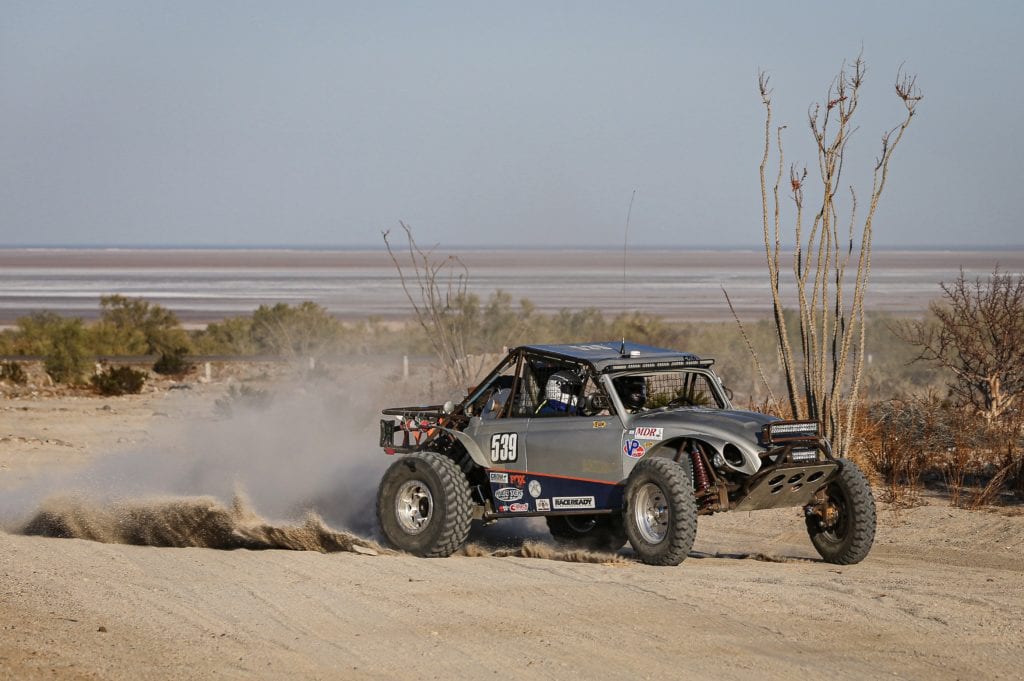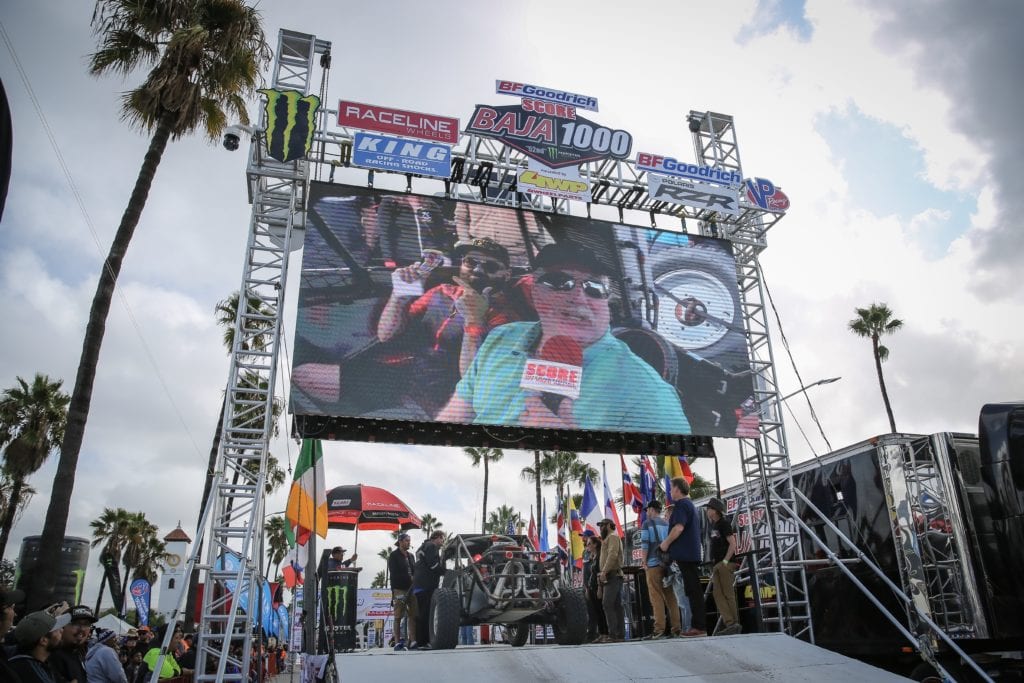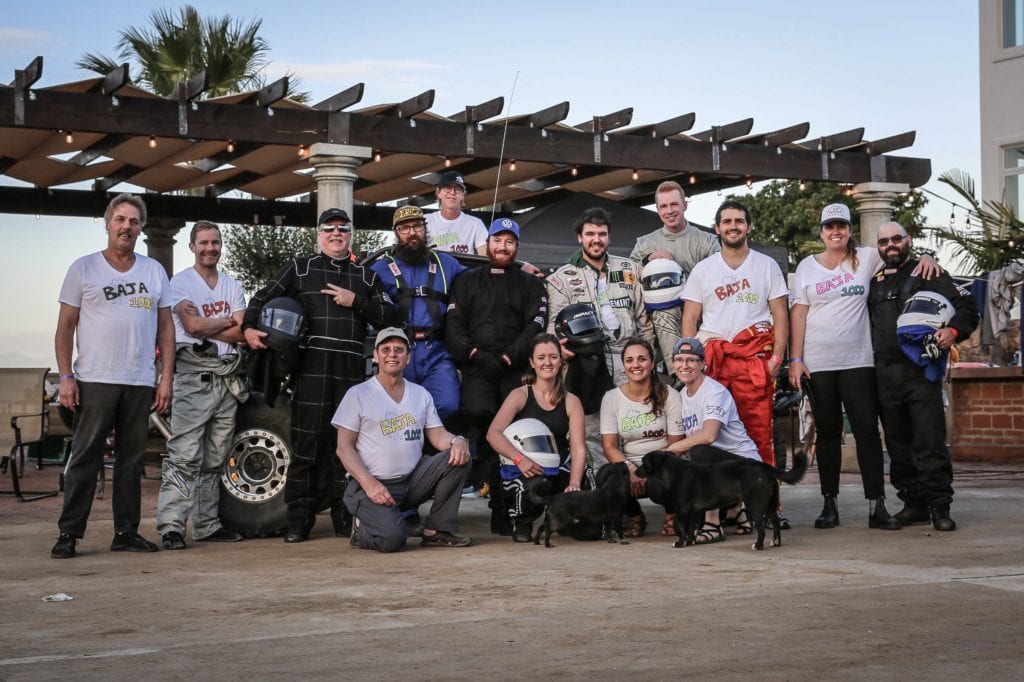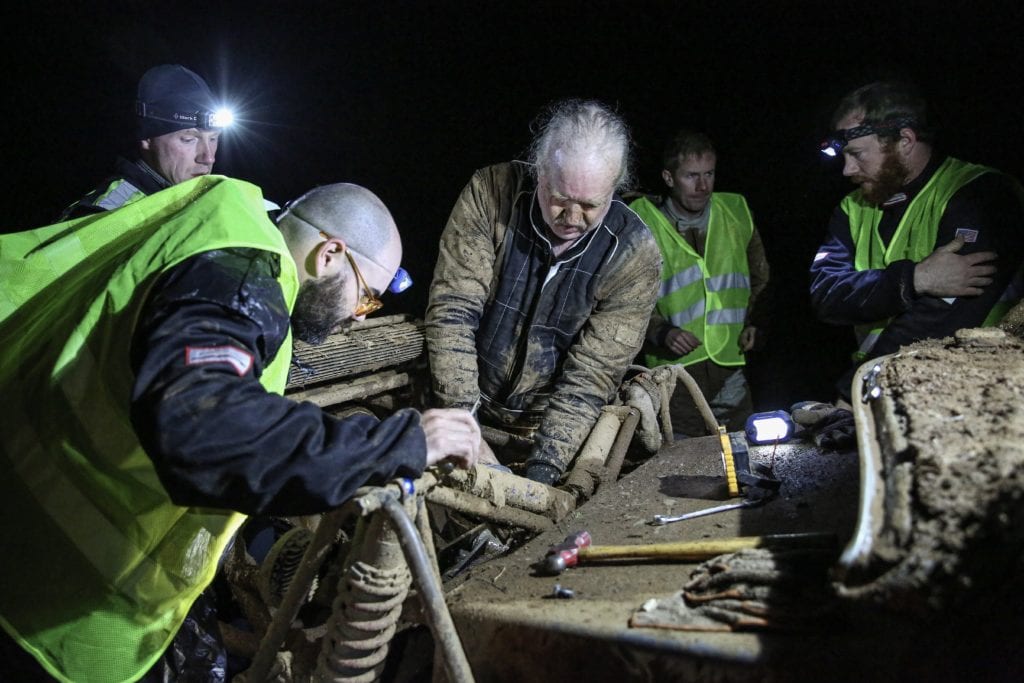
By Rebecca Hagmuller
For the Cordova Times
Off-roading in rough conditions is no stranger to Cordovans.
For Bart Aspen and Alex Hagmuller, entering the Baja 1000 was a dream race often discussed during former adventures out the road.
This year, they made that dream a reality entering with a class 5 Unlimited Baja Bug.
Every year, hundreds of drivers, navigators and pit crews descend upon Ensenada on the Baja California peninsula of Mexico, for the legendary race. The Baja 1000 is a desert race that covers pavement, sand, desert, mountain passes, boulders and this year’s special addition — lots and lots of mud.
When our Alaskan team members heard this year’s race would be one of the wettest in history, a collective sigh of relief was heard. Goodbye dust, hello mud!
Aspen’s racing aspirations started at a young age, inspired by his grandfather who raced the famous Indianapolis “Brickyard” in the 1930s when the racetrack was made of bricks.
To honor his grandfather, Aspen used the name Aspen Racing, after his grandfather’s team name, and adopted the motto, “from Brickyard to Baja” in his honor.
While most race teams have plenty of time for planning and pre-running (driving the racecourse beforehand and taking notes), Team Aspen did not have this luxury. Much of the team committed to the race just a month from race day, a group of car enthusiasts, SpaceX engineers, mechanics, former Formula 1 crew and Alaskan fisherman — you know, people who can fix anything.
Cordova’s Gabrielle Brown, Zeke Brown, Kinsey Justa, Michael Hand, Cameron Hesse and Terry Bartley teamed with crew from California, Oregon and Washington, which included Bill Murray, Chris Patton, Trenton Carpenter, Jen Morell, Jerrod Galyon, Ryan Sellmeyer and myself.

Alex Hagmuller and Zeke Brown were known for driving VW Beetles and Baja Bugs around Cordova as teenagers. They quickly jumped into gear, preparing the car for race day. Gabrielle Brown always enjoyed off-roading in Cordova, but never imagined herself strapped into a race car in one of the hardest off-road races in the world until Hagmuller called her up a month beforehand and asked her to navigate.
Navigating and commercial fishing go hand in hand: if you can follow the dot to the fishing grounds, you can follow the dot to the finish line.
Team Aspen was one of the only non-sponsored teams participating in this year’s race. Only in the Baja 1000 can one simply sign up to be part of a race, and drive alongside NASCAR legend Robby Gordon. While “pre-running” some of the course, Team Aspen was lent a hand getting unstuck by Bryce Menzies, a winning Red Bull trophy truck driver. The Baja 1000 is truly a community culture: racers look out for each other and participants are able to compete against childhood heroes.
While Team Aspen lacked time, they had the advantage of experience.
Once in Ensenada the team kicked into gear and with Aspen’s contagious laughter ringing through the garage, an organized professional race team emerged. One day while working on the car Aspen declared the beloved race car to be named “Mojo” and would often declare excitedly, “More Mojo!” Pairs of drivers and navigators were decided, and we realized we really were racing the Baja 1000.
Days before the race, a storm moved into Ensenada, flooding the area and even delivering snow to the nearby mountains. The racecourse this year was an 800-mile loop going down the west coast and coming back on the east. With the rainstorm, parts of the racecourse turned into rivers and impassable mud.
Organizers decided to put a one-day delay on the race in hopes it could dry out a little. A race start delay has only happened two other times since the Baja 1000’s 1967 inception. With an extra day to prepare and the rain gone, Team Aspen completed a long day of training with a mock course set up in the courtyard so drivers and navigators could practice suiting up and getting in and out of the car.

Race day was a beautiful, sunny day.
“Cars to the starting line!”
To start the race, Carpenter was behind the wheel with Gabrielle Brown navigating. As they climbed into their fire-retardant suits and helmets, it was impossible not to be to not be overwhelmed by the chaotic energy at the start line.
The dirt bikes and quads had already left the starting line at 3 a.m., but next up were the kings of the Baja 1000: the trophy trucks. Behind the trophy trucks were buggies, jeeps, UTVs (or, as Aspen calls them, “utiliscoots”), broncos and every other off-roading vehicle you can imagine.
The streets were lined with vehicles roaring their engines and spectators crammed the streets as race cars departed every 30 seconds. Mojo, Carpenter and Brown were getting photographed and having selfies taken during the whole parade to the start line.
Mojo crept to the start line with Carpenter and Brown buckled into five-point harnesses, and helmets buckled into neck braces, with pressurized fresh air pumped through the helmet.
Gabrielle Brown asked Carpenter through the radio in her helmet, “Are you ready to race the Baja 1000?”
Carpenter replied, flashing the “rock on” symbol with his hand, “Hell yes!”
While Mojo wove through Ensenada, the three Team Aspen chase vehicles raced to pit stops. Mojo flew out of town and roared down dirt roads in the lead for Class 5. Spectators covered the side of the road and Mojo fell for a couple trick arrow signs where it seemed there was a detour, but it was actually local hijinks — all part of the Baja 1000 magic.

The first pit stop completed, and Team Aspen successfully fueled up, and Carpenter and Gabrielle Brown roared down the road to finish their 135-mile stint.
After a successful driver change, and Bart Aspen drove with Chris Patton navigating. The racecourse became muddy and cars started to get stuck, with many a navigator attempting to push vehicles out.
With mud on their visors and navigational equipment, the team pressed on as the road got worse. Two miles from the next pit stop and driver switch, Mojo hit a rut and made a noise. It was the steering box.
Team Aspen was prepared for a lot, but there was no quick fix for a broken steering box. A chase vehicle took car and crew safely to the pit to be towed home.
Team Aspen successfully started and completed 250 miles of the Baja 1000, nearly one-third of the race. Everyone on the team was sad to see it end, but thankful to have made it that far. The race is notorious for having over 50 percent of vehicles not finish, so everyone is extremely proud of what was accomplished. This is just the start for Team Aspen.
Team Aspen would like to give a shout-out to Chris Hager for being our communicator and “eye in the sky”— straight out of his living room in Washington. Thank you to the Forest Service, Eyak Corp and land shareholders for keeping riding land accessible to riders around Cordova.
Lastly, we want to give a shout-out to all the Cordovans who love to go out the road riding, which was an inspiration. “Ride on!” Or, as our new favorite hashtag says, #kickingaspen.
Rebecca Hagmuller and her husband Alex both grew up in Cordova where their first date was driving Alex’s baja bug at 8-mile. They reside in West Linn, Oregon. Rebecca is the big sister to Zeke, Reuben and Gabrielle Brown.





